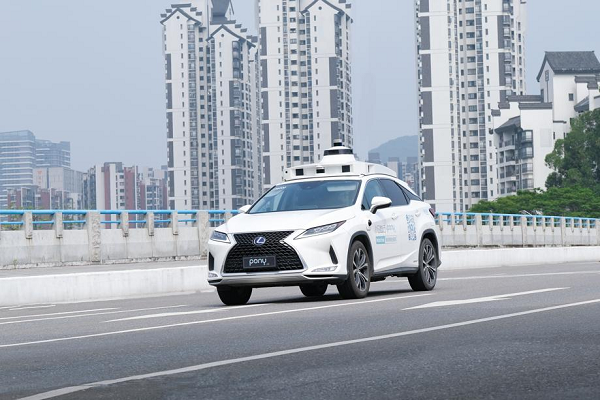Ministry issues trial safety guidance on driverless vehicles

Pony.ai, a self-driving technology startup, tests its taxi service in the Nansha district of Guangzhou, Guangdong province. [Photo provided to chinadaily.com.cn]
China's Ministry of Transport issued a trial safety guideline on the use of driverless vehicles in the public transportation sector on Tuesday, the latest in a batch of measures to promote the growth and commercialization of autonomous driving.
The guideline applies to autonomous vehicles for passenger and freight transport services such as taxis, buses and trucks. It covers vehicles with various degrees of automation and mandates that they should carry at least one driver or security inspector during transport.
"Autonomous vehicles for freight transport and conditional autonomous taxis are required to carry one driver. With the approval of local governments, fully autonomous taxis could be operated unmanned over designated areas with one security inspector overseeing them remotely," it said.
Security inspectors need to receive professional training in autonomous driving technology in a timely manner, master the provisions of road traffic safety laws and regulations and have the ability to take over the vehicles manually in emergency situations. One security inspector can oversee no more than three vehicles at a time.
The guideline stipulated that autonomous vehicles should be driven in designated areas that have undergone road traffic safety assessments to ensure secure transport.
"Autonomous driving technology should be used cautiously for passenger transport services," said the document, adding that autonomous buses should be operated on fixed routes in relatively enclosed roads with simple road conditions and autonomous taxis should be operated in areas with good traffic conditions where risks are more manageable.
For freight transport service, autonomous driving technology could be employed in point-to-point highway transport or on safe, controlled city roads. Transporting dangerous goods without drivers is prohibited.
Operators of autonomous vehicles should be qualified and licensed, adorn their cars with eye-catching patterns, words or colors to clearly inform other drivers of the vehicles' autonomous status, and notify the passengers about the vehicles' autonomous driving functions, safety features and emergency escape routes through videos and signs posted in the vehicles, according to the guideline.
In recent years, China has mapped out concrete standards and regulations for autonomous vehicles and stepped up the application and promotion of autonomous vehicles.
By 2025, China aims to fully establish a system to encourage technology, innovation and investment; the development of controlled traffic environments; the implementation of laws, regulations and standards; product supervision and safety information about standard intelligent cars, as it strives to achieve large-scale production of conditionally autonomous vehicles.
All rights reserved. Presented by China Daily









